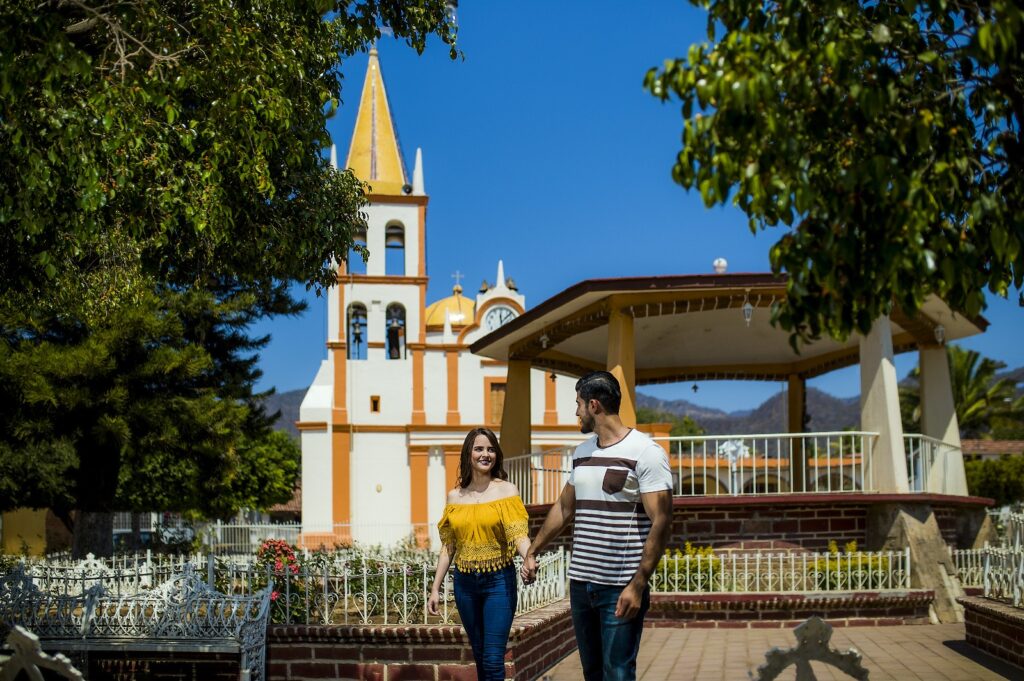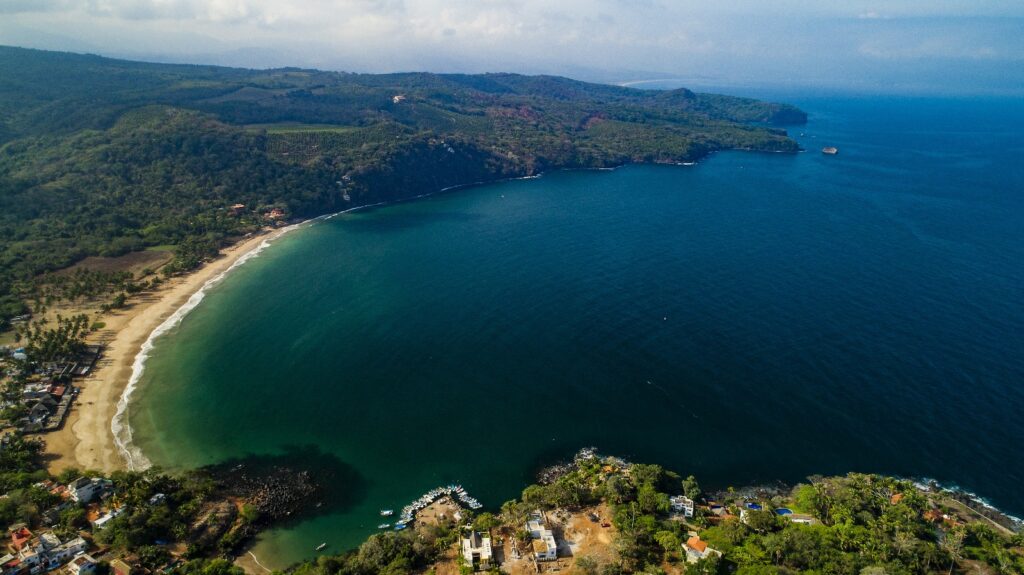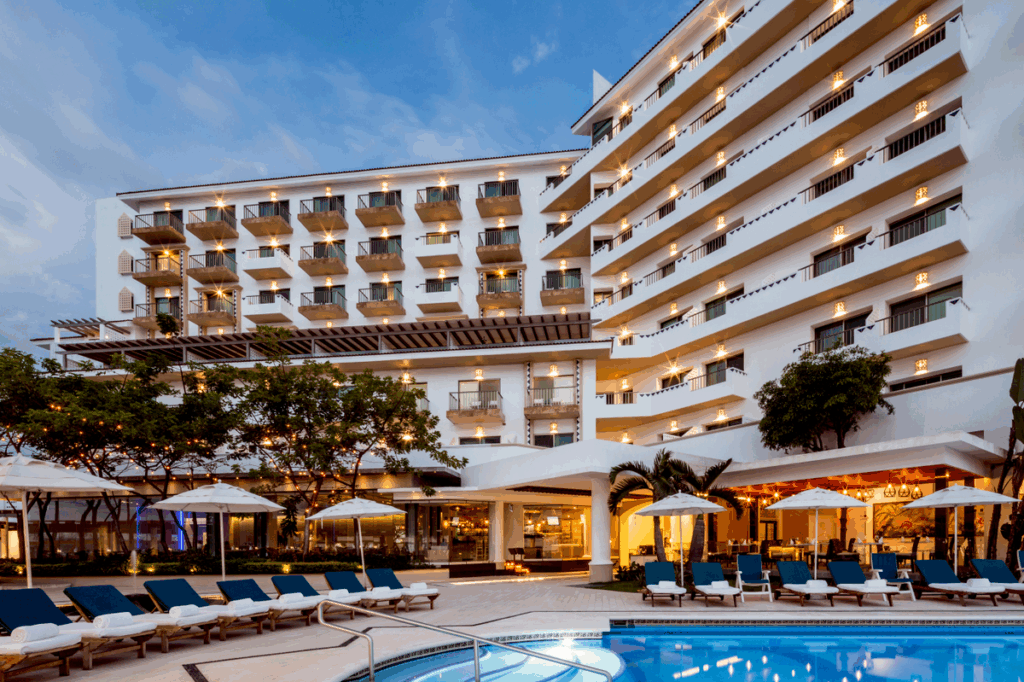
Mexico’s Pacific state of Nayarit is one whose culture, traditions, and gastronomy have put it in the tourist spotlight. One of the best ways to discover the magic of Nayarit is to immerse yourself in its small towns and villages, especially the ones that are renowned for their authenticity, heritage, and culture.
In Mexico, towns that live up to these standards earn a government designation of Pueblo Magico, or Magical Town. Nayarit is blessed with nine Pueblos Magicos — Sayulita, Compostela, Jala, San Blas, Ahuacatlán, Amatlán de Cañas, Ixtlán del Río, Puerto Balleto.
and Mexcaltitan. Each of these stunning, charming towns is totally unique, with something different to offer every style of traveler.
Sayulita is one of the original Pueblos Magicos of Mexico. Bohemian travelers, surfers, artists, and wellness seekers have been flocking to the sun-drenched shores of Sayulita for decades. Since the early days of Sayulita’s tourism scene, the small, once-sleepy backpacking town has blossomed into a boutique haven, complete with designer hotels, open-air restaurants, artist galleries, clothing shops, and much more. It has a thriving beach scene, too, complete with palapa-topped restaurants, toes-in-the-sand bars, and a pervasive laid-back culture.
Sayulita also happens to be one of the wellness capitals of Nayarit, with yoga retreats, day spas, spiritual centers, holistic and New Age shops. And surfers and surfers-in-training will feel right at home in Sayulita, as the beaches have ideal waves year-round. The best season for surfing in Sayulita is December to April and the village is the backdrop for various surf tournaments, like the Children’s and Youth Surf Tournament, the Pacific Music Festival Open Surf Tournament, and the Annual Long Table and Rowing Surf Tournament.

Then there is Jala. Tucked at the base of El Ceboruco Volcano, Jala is a perfect example of a Spanish-influenced town surrounded by nature. Here visitors can wander the cobblestone streets and admire mansions from the 18th and 19th centuries. Just four miles from Jala is the El Salto Waterfall, which springs to life during the rainy season from June to September from a height of nearly 100 feet.
The historic center of Jala is spectacular, particularly the streets of Mexico, Zaragoza, and Hidalgo, all of which have been given historical heritage designations by the government. The stunning Lateran Basilica of Our Lady of the Assumption wears a face of pink and green stone. Inside, Ionic and Corinthian columns wreath an impressive dome.
Jala is the jumping off point from which to explore El Ceboruco and dive deep into the adventurous side of Nayarit. The crater of the volcano has a valley veined with trails for cycling and hiking, as well as designated sites for camping.
Tradition and history flow from the streets of Compostela, a city that was founded in 1530 as the first capital of the Kingdom of New Galicia. This Spanish territory comprised what is now Nayarit, Jalisco, Colima, Aguascalientes, Sinaloa, Zacatecos, and San Luis Potosi. As such, Compostela was a vitally important hub for trade and commerce.
The architecture in Compostela is a must, from the Temple of Mercy of San Santiago Apostol, to the Regional Museum, which houses archaeological pieces from the region. The old Train Station, built on the trunk line of the Southern Pacific Railroad of Mexico, is also a fascinating piece of history.
One of the most important industries in Compostela is its coffee industry, as it is one of the most important for Mexico in terms of coffee bean production. Visitors can tour the coffee plantations and sample some of the finest high altitude coffee in the world.

Finally, Mexcaltitan, the newest of Nayarit’s Pueblos Magicos, is another beachfront destination with a fascinating history. This mythical destination is an island just off the coast of Riviera Nayarit. The tiny enclave is so small that it can be covered on foot in a day, though you’ll likely be covering the streets of Mexcaltitan by boat.
That’s right — by boat. Because of the low elevation of the island, the streets often flood during the rainy season, turning the island into “The Mexican Venice.” Tourists and residents get around the streets and alleyways with the assistance of boats.
Be sure to visit the Museum “El Origen,” an archaeological museum located in the central square in front of the church of San Pedro y San Pablo. Here, a variety of pieces from Mesoamerican cultures is on display.
Mexcaltitan is also known for its gastronomy, particularly its pre-Hispanic recipes made with shrimp. Visitors can try everything from the shrimp meatballs and shrimp-filled tamales, to the shrimp soaked in lemon sauce, shrimp pate, and shrimp aguachile. Of course, you’ll also find oysters, a variety of tacos, and grilled fish.
Nature is also a prime reason to visit Mexcaltitan, especially its Great Lagoon, which is teeming with birds that soar in and out of its mangrove forests. In fact, you’ll have to take a boat ride through the lagoon in order to reach downtown. It’s one of the more magical experiences to have in Nayarit, and one fewer tourists take the time to visit.
Long a hotspot for bird watchers and nature enthusiasts along the Riviera Nayarit, San Blas is a Pacific Coast jewel. The sleepy seaside community is along the northern coast of the state, featuring four miles of fine sand beaches. San Blas is rich in natural beauty, from its navigable canals and mangrove forests to the small islands offshore that welcome more than 300 migratory bird species every year.
San Blas dates back to the 17th century when it was developed as a shipyard and departure point for the Spanish Crown. It was here that the first maritime customs house on the Pacific was established. Today, visitors can tour the Contaduria stronghold, as well as the ruins of the Nuestra Señora del Rosario Temple.
San Blas is also the jumping-off point from which to explore another new Magical Town — Puerto Balleto. Puerto Balleto is the gateway to Nayarit’s Islas Marias, a former prison colony turned center for tourism and wildlife viewing. In the early 20th century, Islas Marias were developed as the Islas Marias Federal Penal Colony. The prison remained in use until 2019 when it closed and the land was turned over to be rehabilitated into a place for recreation. The islands include Maria Madre, Maria Magdalena, Maria Cleofas, and San Juanito. Today the group of islands is considered a UNESCO Biosphere Reserve to protect the more than 1,500 species of flora and fauna.
To access Islas Marias, visitors take a ferry from San Blas to Puerto Balleto on Isla Maria Madres. Puerto Balleto is where visitors will find accommodations for Islas Marias, as well as the Plaza Juarez, which is the town center home to the Guadalupe Temple and the Muros de Agua Jose Revueltas Auditorium. The auditorium is plastered with murals created by the former prisoners. The island is a haven for outdoor adventure, as well, from hiking and biking to bird watching.
Heading south in Nayarit, Amatlán de Cañas is another Magical Town that is deeply rooted in history. Its name comes from Nahuatl, meaning “place where Amate y Papel trees abound.” Later, the word cañas was added due to the sugar cane industry in the region. Today, visitors to Amatlán de Cañas will find historic cobblestone streets, adobe homes with red-tile roofs, and a community steeped in history, culture, and tradition.
Amatlán de Cañas is known for its Temple of Jesus Nazareno in the Centro Historico, a church built in the 18th century. The Municipal Palace is another important building that visitors will find in the Centro Historico. Amatlán de Cañas is also known for the bubbling natural hot springs in the surrounding mountains. Foodies can sample the rich and flavorful local delicacies, like lamb birria, tamales, and various locally made sweets.
Located up in the mountains at more than 3,000 feet above sea level, Ahuacatlán also takes its name from the Nahuatl words that translate to “the place with avocados.” Today the community is still known for its agricultural industries, including avocado, sugarcane, and maize. It’s also known for its tequila production.
About an hour outside of Nayarit’s capital, Tepic, Ixtlán del Río is a gateway to pre-Hispanic Mexico, thanks to its proximity to Los Toriles, an important archaeological site in the region. In fact, Los Toriles is the only pre-Hispanic archaeological zone in the state of Nayarit. It features 93 mounds, as well as a series of gorgeous petroglyphs.
But visitors do not have to leave Ixtlán del Río in order to absorb its history. Its famous La Casa de Cultura Museum has exhibition rooms dedicated to archaeology, paintings, and photography. One of the standout features of Ixtlán del Río is the Cerrito de Cristo Rey, the Hill of Christ the King, a scenic viewpoint with a massive white statue of Christ overlooking the city.
In order to bring awareness to the newest Magical Towns in the state, the tourism minister has announced a new Magical Towns corridor in the southern part of Nayarit, creating a new tourism route across Jala, Ixtlan del Rio, Ahuacatlan, Compostela, and Amatlan de Cañas. This will bring travelers to five of Nayarit’s Magical Towns, both its newest and longer established ones, and foster the opportunity for new businesses to emerge, from dining options, entertainment venues, and museums to transportation services, healthcare facilities, and beyond.












